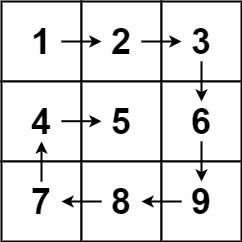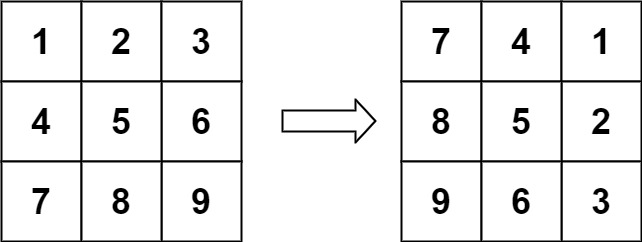
What is a 2D Array?
- A 2D matrix is a two-dimensional array that contains rows and columns in data structures and methods. It is also known as a two-dimensional array.
- A matrix can be represented in code as a 2D array, where each element of the array is itself an array, and each row of the matrix is represented by an inner array.
- Column major matrix is a two-dimensional array in which entries are stored column by column.
- Row major matrix is a two-dimensional array in which elements are stored row by row.
Let’s understand it better through the given diagram:

Note: Working with 2D matrices frequently involves iterating over the matrix’s rows and columns and executing operations on the individual elements.
Need of 2D Arrays in DSA:
Here are some of the reasons why 2D arrays are important in data structures and algorithms:
- Storing and accessing data
- Image processing where images are represented as matrices of pixel values.
- Graphs can be represented using 2D arrays where the rows and columns represent the vertices, and the elements represent the edges connecting the vertices.
- Two-dimensional arrays are used in dynamic programming where the problem is solved by breaking it down into smaller subproblems that are solved and stored in a 2D table.
- Matrices can be represented as 2D arrays in algorithms such as matrix multiplication, Gaussian elimination, and matrix inversion.
Let us now discuss various 2D matrix examples:
Program to return all elements of the matrix in spiral order:

Input: matrix = [[1,2,3],[4,5,6],[7,8,9]] Output: [1,2,3,6,9,8,7,4,5]
Solution:
class Solution {
public List<Integer> spiralOrder(int[][] matrix)
{
int n = matrix.length;
int m = matrix[0].length;
ArrayList<Integer> arr = new ArrayList<>();
int top = 0 ;
int bottom = n-1;
int right = m-1;
int left = 0;
while(top<=bottom && left<=right){
for(int i = left ; i<=right ;i++){
arr.add(matrix[top][i]);
}
top++;
for(int i = top ;i<=bottom;i++ ){
arr.add(matrix[i][right]);
}
right--;
if(top<=bottom){
for(int i = right;i>=left;i--){
arr.add(matrix[bottom][i]);
}
bottom--;
}
if(left<=right){
for(int i = bottom;i>=top;i--){
arr.add(matrix[i][left]);
}
left++;
}
}
return arr;
}
public static void main(String[] args) {
Solution obj= new Solution();
Scanner sc= new Scanner (System.in);
int array[][] = new int[3][3];
// Read the matrix values
System.out.println("Enter the elements of the array: ");
//loop for row
for (int i = 0; i < 3; i++) {
//inner for loop for column
for (int j = 0; j < 3; j++)
array[i][j] = sc.nextInt();
}
System.out.println(obj.spiralOrder(array));
}
}
To print the matrix in spiral the loop iterates through the matrix in four directions:
- Traverse from left to right: This loop iterates from
lefttoright, adding each element to thearrArrayList. - Traverse from top to bottom: This loop iterates from
toptobottom, adding each element to thearrArrayList. - Traverse from right to left: This loop iterates from
righttoleft, adding each element to thearrArrayList. - Traverse from bottom to top: This loop iterates from
bottomtotop, adding each element to thearrArrayList.
Program to rotate the image by 90 degrees (clockwise):

Input: matrix = [[1,2,3],[4,5,6],[7,8,9]] Output: [[7,4,1],[8,5,2],[9,6,3]]
Solution:
public class Solution {
public void rotate(int[][] M) {
for (int i = 0; i < (M.length+1)/2; i++) {
for (int j = 0; j < M.length/2; j++) {
int tmp = M[i][j];
M[i][j] = M[M.length-j-1][i];
M[M.length-j-1][i] = M[M.length-i-1][M.length-j-1];
M[M.length-i-1][M.length-j-1] = M[j][M.length-i-1];
M[j][M.length-i-1] = tmp;
}
}
}
}
Instead of using the longer method, the approach used in this solution is to divide the matrix into smaller concentric squares and rotate each square individually. That is,
- The outermost square is rotated first, followed by the next inner square, and so on.
- For each square, we use four temporary variables to store the values of the four corners, and then perform a cyclic rotation of the values in that square.
Note: also read about DSA: SubArray
Follow Me
Please follow me to read my latest post on programming and technology if you like my post.
https://www.instagram.com/coderz.py/
https://www.facebook.com/coderz.py
Staying up to the mark is what defines me. Hi all! I’m Rabecca Fatima a keen learner, great enthusiast, ready to take new challenges as stepping stones towards flying colors.
Leave a Comment
You must be logged in to post a comment.